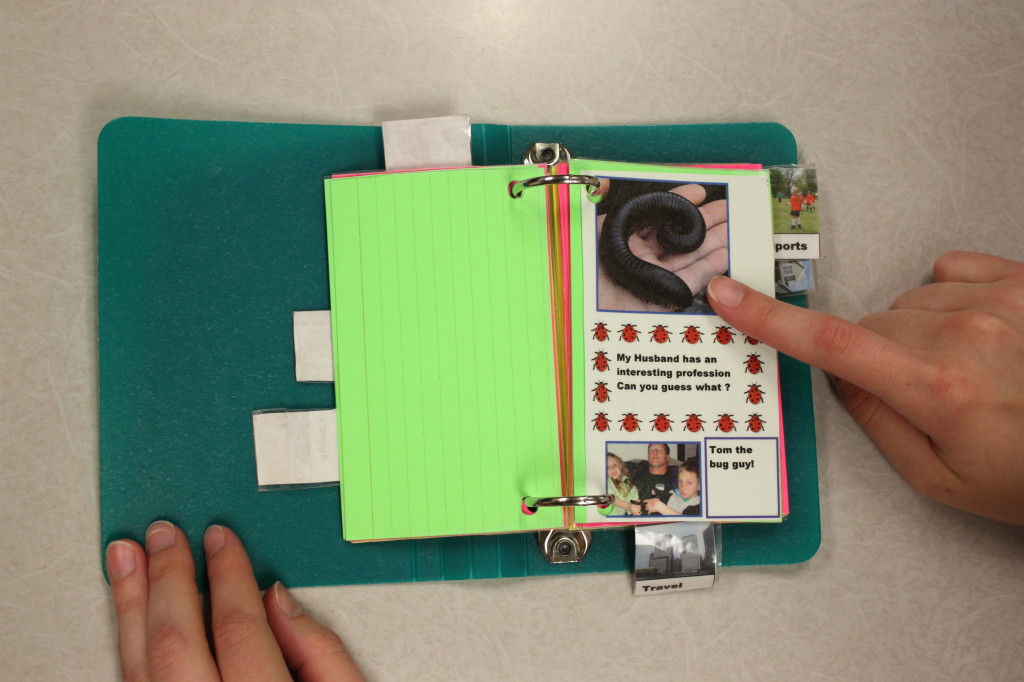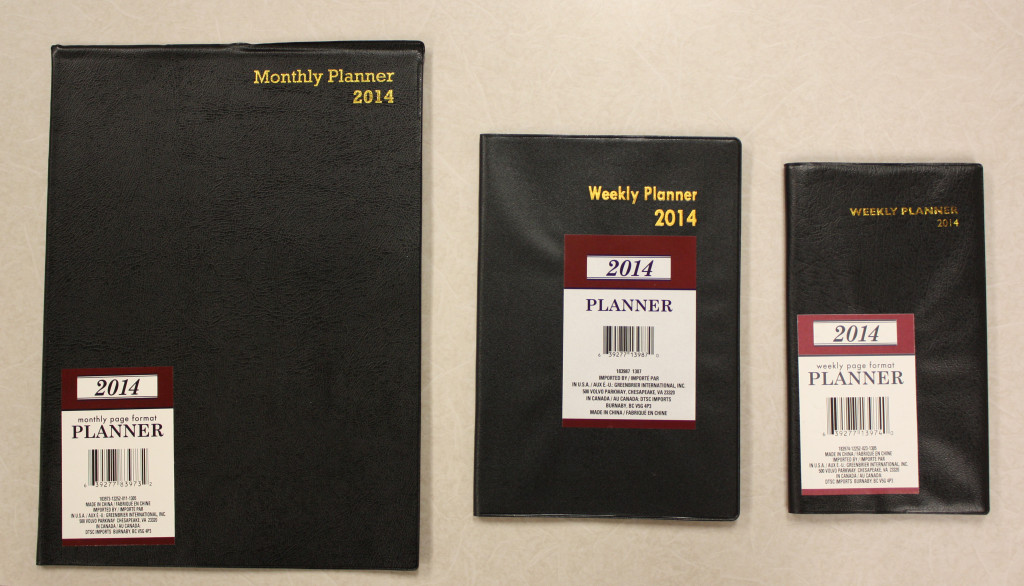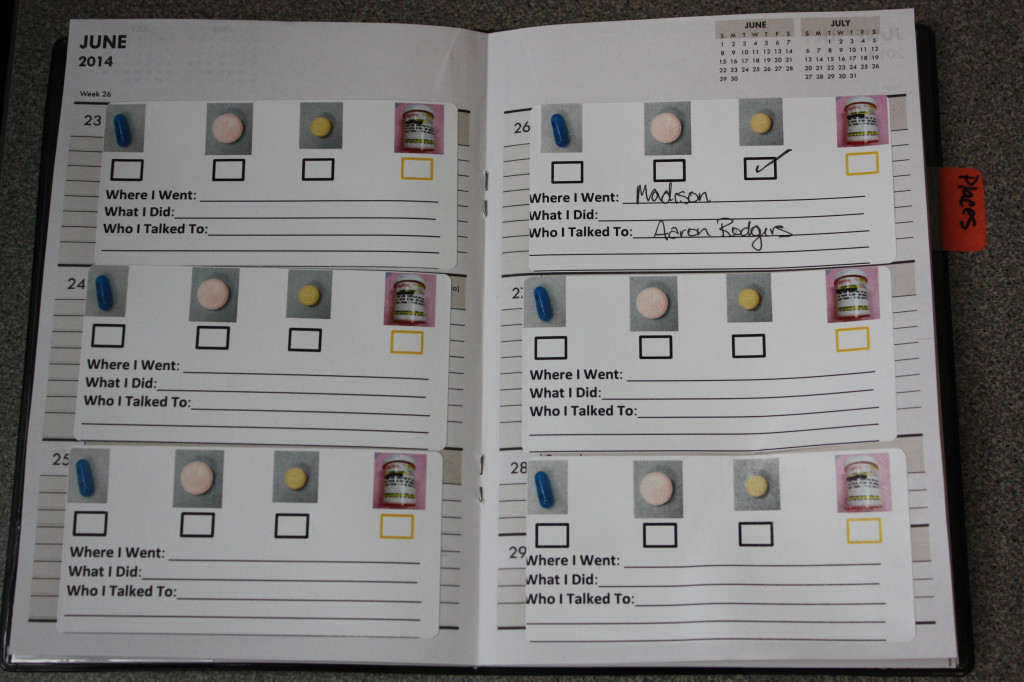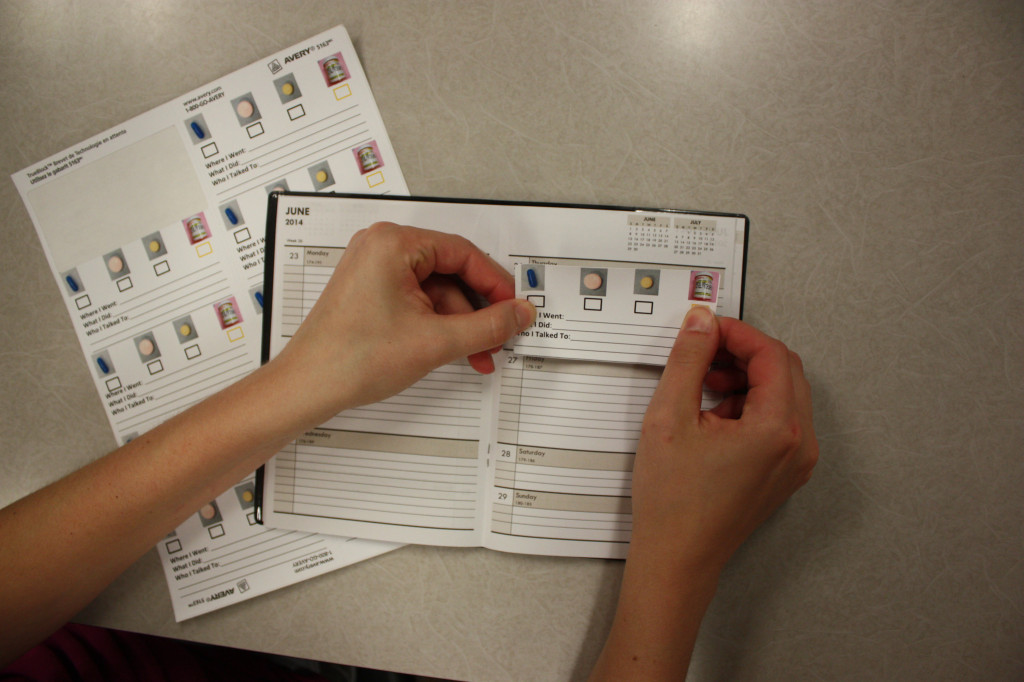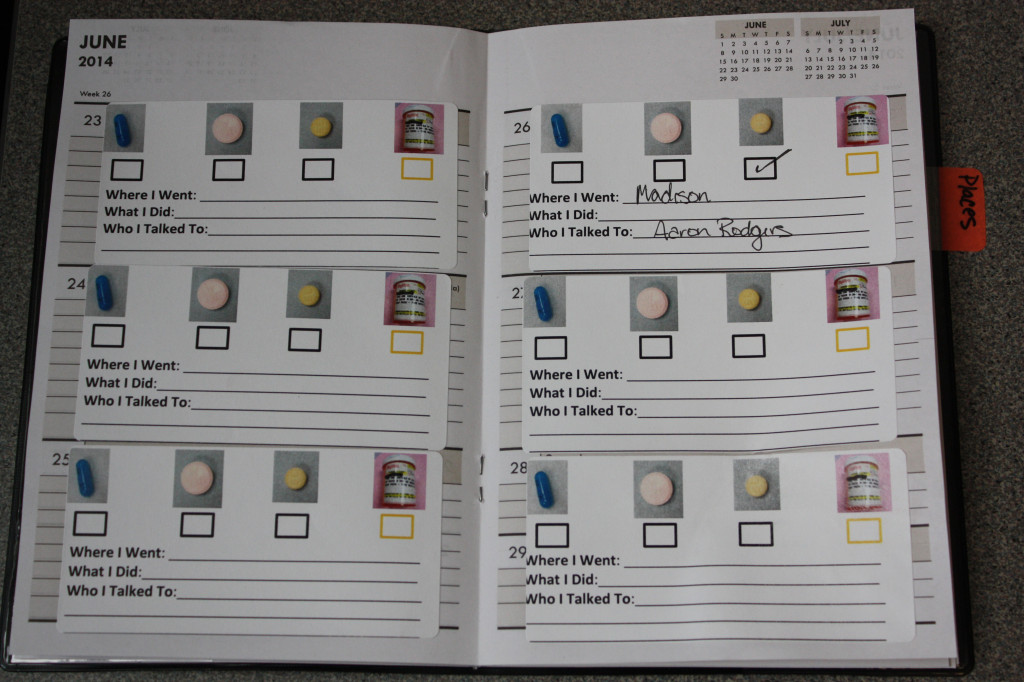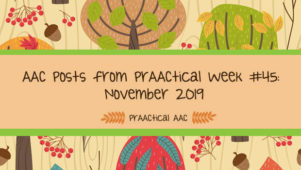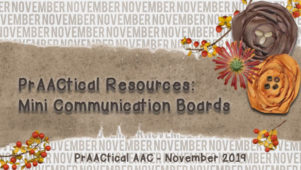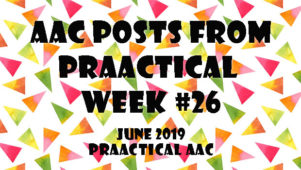How We Do It: Using the Pocket Calendar With Heather Buhr and Dr. Kristy Weissling
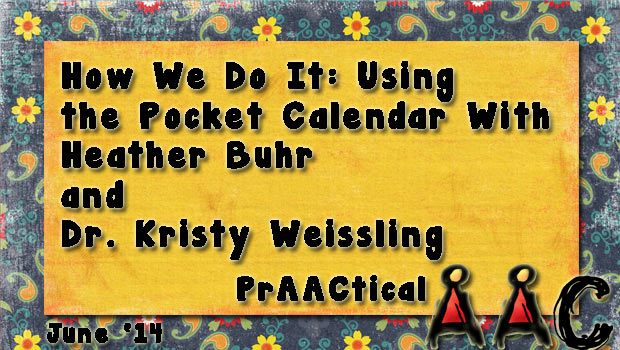
We are happy to welcome back our friend and colleague, Dr. Kristy Weissling, and her student Heather Buhr, who are sharing more information about an AAC tool they are using to support people with aphasia. Take a look at their Pocket Calendars, which may be beneficial to clients with other kinds of communication difficulties as well. You can see their original post, Low-Tech AAC for Adults with Aphasia, here.
:::::::::::::::::::::::::::::::::::::::::::::::::::::::::::::::::::::::::::::::::::
In our last post we examined the differences between memory books and communication books. As promised, we are back again to share with you a low-tech “device” that we have been recently using- the pocket calendar. It’s simple, easy to use, comes together in a snap, and is probably familiar to your clients. We will review how our clients are using these pocket calendars, why we find them effective, and how to put one together.
Keeping in mind the purpose of a communication book – to support conversation and basic communication – let’s discuss how our clients are using pocket calendars. We had a difficult time getting three ring binder type communication books integrated into the daily lives of the people we saw. The clients in our clinic are using the pocket calendars in two main ways: episodically and categorically. The episodic use of the pocket calendar occurs when the individual with aphasia writes what they did each day (e.g., went to a Packer game) and later shares this entry with a communication partner. Now, you may ask, what if the person cannot write? Many of the people we see can enter word approximations or a few letters that allow us to guess or cue them to say the item. If they have NO writing ability we have used mailing labels to create check boxes they can chose from to denote what they did on certain days. Note: they are not relying on this entry to assist their memory, but rather the entry is used as a point of reference for the communication partner to establish topic and provide specific vocabulary for the person with aphasia. Therefore, a conversation with a pocket calendar may look like this: the individual with aphasia pulls out the pocket calendar and turns a day in the calendar when something interesting happened, he/she shows the entry to their communication partner or uses the entry to support spoken output. While the individual points or says specifics the communication partner may ask them questions (based off the entry) and can derive context from the day the entry was made and other entries around it. Additionally, individuals may use the pocket book in a categorical format, with personal information grouped in the front and back of the pocket calendar. For example, important health information may go in the front (e.g., name, address, phone number, emergency contact). Areas for this are already provided but we have again used mailing labels to add pictures, increase font size, and allow for easy changes. This section could be used in a fast-paced or emergency setting (e.g., doctor’s office). Overall, the pocket calendar contains information that the individual with aphasia can use as a reference in conversation, giving them the power to initiate and manage a conversation.
We believe that the use of pocket calendars, as communication books, have been successful with some people with aphasia for a few reasons. Anecdotally, we have found that clients report keeping the calendars with them throughout the day. While they do not always report using it in all communication situations, they do report that they keep it available as a back up, have times when they use it for specific purposes, and enjoy “practicing” writing by recording their activities. A pocket calendar is familiar to people with aphasia. Therefore, equipping an individuals with aphasia with a pocket calendar may feel natural to them, especially in conversation. For example, pulling out a pocket calendar book in natural conversation may not only be quicker but also less attention-drawing than pulling out a three ring binder. The familiarity with calendars makes treatment probes with a pocket calendar as a low-tech AAC “device” tangible and realistic. Financially, pocket calendars are cheap (we buy ours at a dollar store) making it a practical purchase. The ability to find things by “when” it happened (episodic) vs. by group (categorically) may tap into different organizational systems. Finally, from a non-speech and language perspective, utilizing a calendar may assist the individual in gaining a sense of organizational independence (e.g., a checklist of medication to be taken every day). Overall, we find the natural, fiscally responsible, and functional characteristics of the pocket calendar make it an effective low-tech device.
Now for the specifics of how we make the pocket calendar communication books. We first offer the client three sizes: small, medium, large. Typically, we find our male clients like the smaller sized calendar, as they can easily fit it into their pocket. As we mentioned before, we see the use of the pocket calendar split into two main categories: episodic and categorical. Below are some more specific examples we have used for each category.
Categorically
We have used both the front and the back of pocket calendars by printing categorical information on address labels and covering the “notes” or “address book” regions of the calendar book. For quick navigation we have used plastic post-it note tabs in differing colors to delineate the topic in each area. Though categorical can be a challenge for individuals with aphasia we have noticed that individuals tend to habituate to color. Things we may place in categorical sections of the book:
- Identifying information– name, address, phone number. This can be especially helpful for people with significant word finding difficulties at an appointment or when meeting a new clinician.
- Advocacy support– “I have aphasia, it is a loss of language not intellect”, tips for communication partners, suggested communication strategies (e.g., written choice, additional response time).
- Personal Health information- medications taken, disorders or symptoms that may be important to know (e.g., history of seizures). This section may be especially helpful in emergency situations, especially if the person keeps the pocket calendar with them at all times.
- Previous service- previous speech-language therapy, medical services, etc. This has been especially helpful for us. We may include pictures of the buildings where individuals visit or received services.
- People with pictures- We may include the names of family members, addresses, and pictures if they are available. It’s easy to import a picture to an address label.
- Favorites- food, restaurants, places, etc. This is a great way for the individual to initiate conversation or assist the communication partner in determining what the individual with aphasia is trying to express. For example, if a person is an avid restaurant goer, a “food” section with his/her favorite foods and restaurants may ease word-finding difficulties.
Episodic
This is really where the calendar becomes unique to lots of other communication books. Individuals write down what they do each day (it doesn’t have to be what they did, it could be something they thought of or found interesting!) to share with their communication partners at a later time. We have customized each day in the calendar by adding address labels, creating a simplified, organized look. These labels are easily made in Microsoft Word, and a template can be created for quick reproduction. Here are some ways to modify the address labels:
- Checklist- you can easily create a checklist of medications or daily tasks (and even include a photo).
- Daily communication partner- you can create a space on the address labels where the individual can write about who they talked to that day, to share later.
- Places visited- similar to the daily communication partners, you have the individual write places they visited on a particular day.
We believe we have seen a change in use patterns with our pocket calendars. We have not gathered empirical data on the use of pocket calendars, but we have found them to be convenient, easy to make changes to (just print a new address label), and cost effective. We hope this idea will spark some new innovations in the use of communication books for people with aphasia.
Filed under: PrAACtical Thinking
Tagged With: aphasia, communication book, Heather Buhr, Kristy Weissling, Pocket Calendar
This post was written by Carole Zangari
